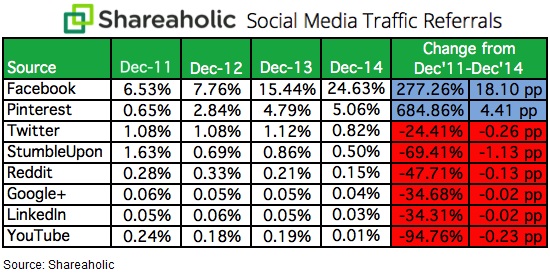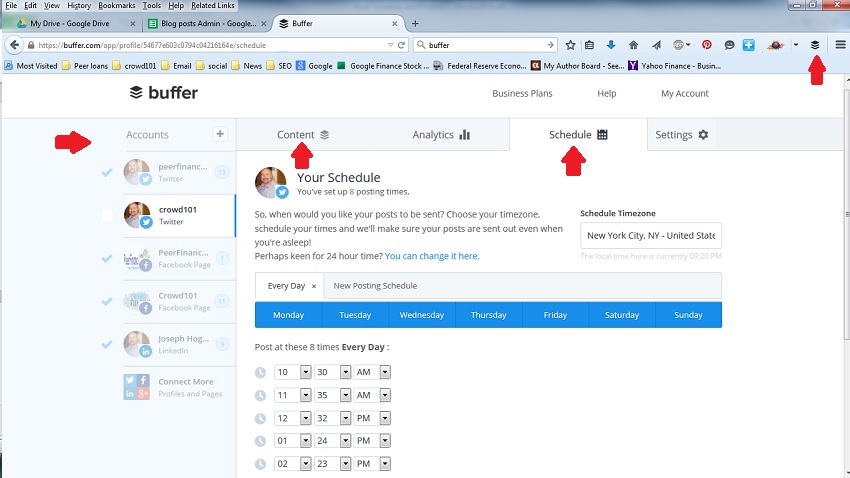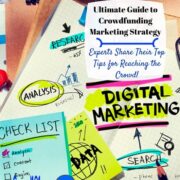How to Build a Basic Crowdfunding Social Media Strategy
Launch a campaign without a basic crowdfunding social media strategy and risk being one of the many that fail to reach their goal.
We’ve talked about using social media for crowdfunding in the past but have yet to work through a basic crowdfunding social media strategy from start to finish. We’ll walk through a basic strategy in this first post and then work through more detailed strategies for each of the social media websites over the next couple of weeks.
It’s tough to over emphasize the importance of a crowdfunding social media strategy for your campaign. Too many people assume that the ‘crowd’ in crowdfunding is on the crowdfunding platforms themselves. There may be upwards of 13 million visitors a month on Kickstarter but the real crowd is the 1.5 billion monthly users on Facebook and other social networks.
Understanding Goals for your Crowdfunding Social Media Strategy
A basic crowdfunding social media strategy needs to start with an understanding of goals and potential in social media for your campaign. Just like the huge traffic coming to crowdfunding platforms like Kickstarter, your message isn’t going to go viral without a strategy and without major effort on your part.
Research on crowdfunding success showed that people with just 10 Facebook friends had only a 9% chance of raising $10,000 on Kickstarter but those with 100 friends or more saw their odds of success more than double. Your crowdfunding social media strategy will be much more likely to succeed if you start with an established network of friends and followers.
- Touch base with old acquaintances a few times to reestablish old bonds before you start asking for input and favors.
- Remember, social media is…”social.” Post updates about your social life frequently and interact with your network to build a real relationship.
- Join a few groups that are related to your campaign’s category and start connecting with members.
Remember, engagement on social media posts is typically extremely low. Only about 3% of your network is going to ‘like’ or share any given message unless you actively push the post or ask people directly. This makes a crowdfunding social media strategy both a numbers game and a person-to-person challenge.
Your basic crowdfunding social media strategy needs to start with your established network and work out from there. After you’ve established your personal network, you’ll want to reach out to everyone individually to introduce the campaign and ask for their support. Don’t forget to ask for monetary support but you’ll want to make sure they know how important those ‘likes’ and shares are to the campaign.
Spend Less and Get More with your Crowdfunding Social Media Strategy
There are hundreds of social media networks online. President Obama ‘limited’ his official presence to 15 networks for the 2008 presidential race to raise more than $500 million from 6.5 million online donations.
Unless you’ve got a presidential-size campaign, you’ll want to limit your crowdfunding social media strategy to between three and six social media networks. Focusing on the top networks will get you the majority of the effect with the minimum of effort.
Facebook, Pinterest and Twitter account for the majority of social media traffic to websites.
[linkad]
Facebook is the clear leader and a must for your crowdfunding social media strategy. A previous post revealed the 7 secrets to a successful Facebook business page, including how to set up your page and attract friends. Set up a separate Facebook page for your crowdfunding campaign and start building your following at least a month in advance of the campaign.
Pinterest can be a huge asset if you have a blog and the time to establish your profile rank but it may not be the best platform for a short-term crowdfunding campaign. I have several blogger friends that get tens of thousands of visitors to their blogs each month from Pinterest but only because they have spent years developing a following. If you already have an account, step up your image posting during the campaign.
Engagement on Twitter, i.e. the number of retweets and favorites, is notorious even for social media sites. Just 6% of tweets are retweeted and nearly all of those (92%) happen within the first hour of the original tweet. The life of a tweet is less than 20 minutes, that’s how long it takes for most tweets to get buried on people’s screen.
If you already have an established network on one of the other sites, you should consider building it into your basic crowdfunding social media strategy. I get considerable traffic from Google+ and LinkedIn because I was active on both networks long before I started blogging.
YouTube can be a good opportunity if you have the equipment and skills to do your own videos quickly. You’ll want to post your crowdfunding videos to the site but most people find that making additional videos to post on the network takes too much time for too little traffic.
Building your Basic Crowdfunding Social Media Strategy
Your first task in building a basic crowdfunding social media strategy will be to create your accounts on each website. We’ll save this for the posts on each specific site, including tricks on how to optimize your account for followers, but it’s pretty easy to do if you need to set one up now.
I reviewed the Buffer app as the last social media tool you’ll need in a prior post. Buffer allows you to link your social media accounts and automatically share to one or all on a set schedule. It makes social media sharing extremely easy and you can schedule 10 shares with the free account. I pay $10 a month and can schedule up to 100 messages for each account. This means I can schedule nearly the entire week in a couple of hours and have a continuous social media presence all week.
How often to post your social media message varies by network:
- Post your crowdfunding-related messages no more than twice a day on Facebook. You can also post a personal message or unrelated share each day to keep it from seeming like a continuous commercial for your campaign. Make sure you share the message on your personal page as well.
- Tweets die in less than half an hour so you can post more often on Twitter without annoying followers. I schedule eight tweets a day, every hour during the peak hours and then every couple of hours.
- Post to LinkedIn once or twice a day, during working hours, and once to related groups.
- You can post a little more frequently to Google+, up to three or four times a day, and once to related groups.
- Followers on most networks are most active between noon and 4pm on weekdays. Pinterest is most active between 9am and 11am on Saturdays. Make sure you schedule some important shares during these time periods besides regular messages throughout the day.
Don’t forget the ‘social’ in social media. Make a habit of commenting and sharing other people’s posts. Many people will share your own posts just as a matter of fairness but you’ll also build a more active social network.
Scheduling out a strategy of when and what you will share will make things much less stressful.
- Message out any funding milestones you reach, i.e. 25% and 50% of your goal
- Share any special comments by backers
- Share any news or developments related to your campaign or category
- Thank influencers or bloggers for their support
Using your crowdfunding social media strategy to get people talking about your campaign is only the first step. Make sure you’ve linked your crowdfunding page on all your social media accounts and don’t forget to ask for support.
Reach out personally to your network before the campaign goes live to secure those all-important first day donations to your campaign. Reaching 20% or more over the first couple of campaign days will provide social proof for the project and might just get you featured on the crowdfunding platform. Reach out again after a week to those that have not yet pledged support.
Looking for more ideas on crowdfunding marketing? Check out our post on getting the biggest bang for your crowdfunding marketing budget.
A basic crowdfunding social media strategy can be surprisingly effective in getting support through a minimum of effort. Going a little further on a couple of the social media networks like Facebook, Pinterest and Twitter can pay off if you have the time. We’ll cover more detail into each platform and how to leverage the network for crowdfunding success in the rest of the series.




